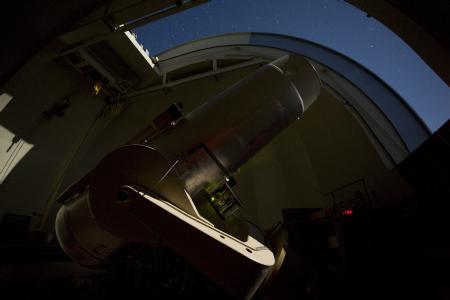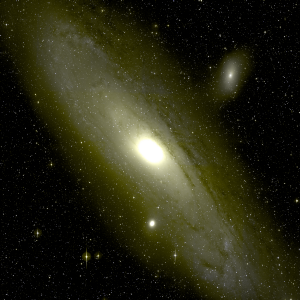
|
|
|
|
June 15, 2009
HPWREN is Key Partner in New Palomar Transient Factory Sky Survey By W. Scott Kardel Public Affairs Coordinator, Palomar Observatory, California Institute of Technology Astronomers using telescopes at Palomar Observatory and around the globe have begun an innovative sky survey that will be used to detect unprecedented numbers of powerful cosmic explosions and other transient events. The survey also may soon reveal new classes of astronomical objects. All of these discoveries will stem from the Palomar Transient Factory (PTF) survey, which combines, in a new way, the power of a wide-field telescope, a high-resolution camera, and high-performance networking and computing, with rapid follow-up by telescopes around the globe, to open windows of discovery for astronomers. The survey has already found 40 supernovae and is gearing up to switch to a robotic mode of operation that will allow objects to be discovered nightly without the need for human intervention.
HPWREN, the High Performance Wireless Research and Education Network, is a key partner in this survey which allows a remote telescope located on Palomar Mountain to rapidly deliver more than 100 gigabytes of imagery every night to a computing center hundreds of miles away. HPWREN's high-speed data link allows image data to be beamed off of the mountain to Internet, and then to the LBNL's National Energy Scientific Computing Center for instant analysis. There, computers compare new digital images to ones previously obtained at Palomar. More computers using a type of artificial intelligence software sift through the results to identify the most interesting "transient" sources - those that vary in brightness or position. Within minutes of a candidate transient's discovery, the system sends its coordinates and instructions back via HPWREN for follow-up observations using the Palomar 60-inch telescope and other instruments. HPWREN provides a critical link in enabling this new survey which astronomers are expecting to deliver big discoveries. Full press releases are available from Caltech and
LBNL/NERSC.
|

